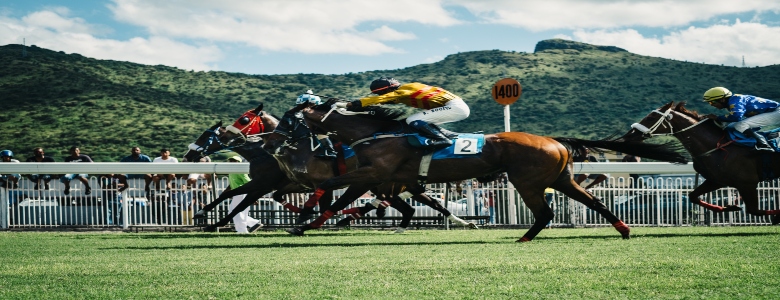
When you invest money you expect to make a profit, otherwise what’s the point of taking risk with your money? A common question I get asked is what return might I expect to receive on the money I invest.
My unhelpful, but truthful answer is that it depends. It depends upon, among other things:
- How long you are investing for,
- How much investment risk you are willing to bear,
- The point in the investment cycle you are investing.
We can, however, look at the Expected Rate of Return (ERR) for an investment to act as a guide for possible returns, whether that is from a single share, asset class or a diversified portfolio. Due to the myriad of variables involved with investing the ERR does not offer anything close to a guarantee but it can be informative.
For our savings it is easy, the expected return is the savings interest rate offered by the bank or building society, and while instant access accounts have variable interest rates, we have a very good idea of what return we will get on our savings.
Calculating the ERR for an investment is somewhat harder with a greater margin of error but it is possible, and to help your understanding consider it using horse racing as an analogy.
The following horses are running in a race with the following odds:
- No Risk, No Return – 11/10
- The Only Way is Up – 5/2
- Black Swan Event – 11/1
- Get Rich Quick -14/1
- Home Bias – 16/1
In coming up with the odds the bookmaker will consider a number of factors including current form, the conditions underfoot and the horse’s ability to run on them, the horse’s weight, past outings at the same course and the horse’s experience and age.
As punters we can do our own research and consider whether any of the horses are worth backing at the odds given. We can also work out our expected return on our stake. If I put £10 on each horse I know I would get back the following if the horse won.
- No Risk, No Return – £21 (£11 profit)
- The Only Way is Up – £35 (£15 profit)
- Black Swan Event – £120 (£110 profit)
- Get Rich Quick – £150 (£140 profit)
- Home Bias – £170 (£160 profit)
I can then consider the probability of the horse winning and make an informed decision whether it is a bet I want to take. I might be happy to take on the chance of the outsider, Home Bias, winning. Or, I might want to play it safe and back the favourite No Risk, No Return and accept lower winnings.
This last point is an important one for investors because the risk we are willing to take with our money will depend upon our overall attitude towards risk and our capacity for loss, as broadly defined as whether we have the financial resources to cope with losing a sum of money without negative consequences for our lifestyle.
When investing the expected return considers how an investment has performed under certain conditions, its current value and how this compares to the ‘risk-free rate’.
The risk-free rate is the return on one or three month UK or US government bonds; they are deemed to be risk-free because neither the UK or US governments have ever defaulted on its debt. The probability of either not being able to meet their commitments is deemed to be zero. In practice, nothing is entirely risk-free but using UK or US government bonds is accepted as being the closest you’ll get.
Knowing the risk-free rate is important because we can then discern if it is worth taking the extra risk of investing in other assets in order to achieve the higher expected rate of return; if the additional return isn’t attractive enough it isn’t worth accepting the risk of loss to achieve it.
So, in short, the Expected Rate of the Return is the sum of all possible returns for an investment multiplied by the probability of those outcomes happening.
Examples of ERR
As explained above, the expected rate of return can apply to single company shares, to asset classes or to a portfolio of assets. The list below provides examples of the long-term expected rate of return for the major global asset classes*:
- Cash – 3% pa (note, I said long-term above)
- Global Government Bonds – 3.33% pa
- Developed Market Equities – 5.25% pa
- Emerging Market Equities – 6.7% pa
If you were to make decisions on this data alone investing in emerging market equities would be the obvious choice; why get a 3% long-term return when you can get a 6.7% return?
But, as with betting on horse races, it is also important to consider the risk involved in achieving those returns. The bookmakers help us out by giving us odds and we know, the longer the odds the less likely the outcome. In investing we can use volatility to understand how much risk is inherent with an investment as measured by its standard deviation (how much the returns vary).
Considering the above list of asset classes again, but comparing standard deviation we can see the following:
- Cash – 0.67%
- Global Government Bonds – 1.63%
- Developed Market Equities – 14.31%
- Emerging Market Equities – 20.17%
So, cash might not provide much return but it does not expose our money to too much risk. Emerging market equities, on the other hand, provide higher returns as compensation for the greater inherent risk.
Expected Returns Within Asset Classes
Investors can also compare the expected return within asset classes. Global equities, for example, can be divided into sub-categories. Two of the best known are growth stocks and value stocks; growth stocks are companies that are loved by investor and are performing particularly well, as such their share price is high relative to the value of their assets. Google, Amazon and Apple are good examples.
Value stocks are companies that, for some reason, are unloved by investors. Their share prices tend to be low relative to the value of their assets. Large traditional companies like the major airlines and utility companies are examples.
We expect the ERR for value stocks to be higher than for growth stocks because, with a low relative share price, there is a greater opportunity for higher returns compared to growth stocks with their high relative share price. This doesn’t mean growth stocks can’t generate higher returns compared to value stocks (and they have done over the past 12 yrs) but the greater the returns experienced to date, the lower the probability of future higher growth. Put simply, there is less room for growth.
Using Horse-Racing To Explain The Expected Investment Returns
The main difference between horse racing and investing is that horse racing is a zero-sum game; only one horse can win. Once I make my bet the odds are fixed and once the race is run the bet expires.
With investing, on the other hand, unless I invest in a single company that goes bust, my money is always in play and the actual and expected returns will fluctuate on a daily basis as new information becomes available and the probability of returns change.
What is more, in theory, rather than putting all my eggs in one basket, I could also spread my bets by backing every horse. If I did so my expected return would be £496 for my £50 total stake but in reality (accepting I could back horses to finish in the top 3 places for lower odds), I could never actually receive £496 if I’m backing every horse to win because 4 have to lose.
With investing, though, because it is not a zero-sum game, I can diversify away risk by investing in a large number of companies and different asset classes. My expected return then becomes the weighted average of the probability of return of all the constituent parts.
For example, if I have a portfolio that is invested 50% in shares and 50% in government bonds with expected returns of 7% and 3% respectively, my overall expected return would be 5% (50% x 7%) + (50% x 3%).
The biggest difference between horse racing and investing, though, is that few people make money on the horses, but stock market investors who act with patience and discipline over the long-term reap the rewards.
*Source – EBI Portfolios Ltd
Photo by Julia Joppien on Unsplash






